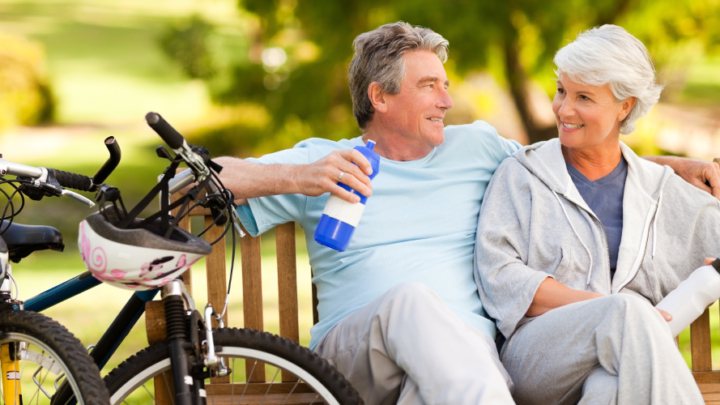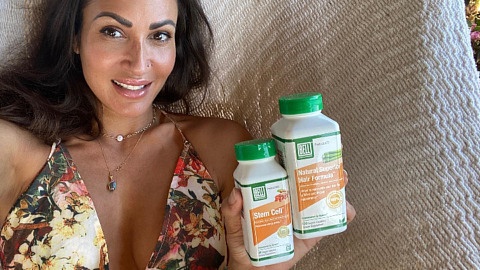These ones are going to be applicable and easy to follow. It’s no secret that we are experiencing one of the more stressful times globally, that most of us...
6 Summer Health Hazards to Avoid This Year!
The summer months bring beautiful weather, fun with friends and family, and great memories. But there are also health hazards that come with the summer weather, and you should take care to protect yourself from them so you can enjoy the season to the fullest.
This article explains the different types of health hazards you should be aware of to keep your summer healthy and fun for the whole family.
Heat Stroke
Heat stroke occurs when the body is exposed to high temperatures for a long period of time and is dehydrated. It is a serious condition that leads to the failure of the body’s ability to control its temperature, which can lead to organ and brain malfunction. From an official medical standpoint, heat stroke occurs when the internal body temperature reaches 105 degrees Fahrenheit.
To prevent heat stroke, avoid spending long periods of time in high temperatures with sun exposure. Take breaks to find a cool space in the shade, indoors with air conditioning or a fan. Also, make sure to stay hydrated to allow your body’s temperature control system to do its job.
Eye Damage
The retina (the ocular membrane where images are formed and transmitted) is particularly susceptible to damage from the bright summer sun.
Studies have shown that UVA rays from the sun may be harmful to the macula (an oval yellowish area surrounding the fovea near the center of the retina in the eye. It is the region of greatest visual acuity). Macular degeneration is a major cause of sight loss, particularly in people over 60 years old, and the sun’s rays may speed up or worsen the condition.
Prolonged exposure to the sun’s rays and tanning machines may also lead to burning of the cornea (the clear refracting surface that admits light and images to the retina) and should be avoided by always wearing UV protective lenses.
Read more about how to help maintain your eye health: 5 Tips for Maintaining Good Eye Health
Dehydration
Dehydration occurs with an abnormal loss of water from the body, and in the summer the risks of dehydration are magnified exponentially. High temperatures, increased exposure to the sun, sweating, and alcohol can all lead to dehydration and the resulting symptoms that can include low blood pressure, fever, and rapid breath and heartbeat.
The key to avoiding dehydration is a consistent and increased water intake. On average an adult female requires 1.6 liters of water per day and an average adult male requires 2 liters of water per day. But on hot summer days, or when exercising those totals need to be increased to replace lost water through sweat and exertion.
Sports drinks can also help with hydration as they replenish sodium and potassium which is also lost in sweat.
Read more about staying hydrated in the summer: Stay Hydrated This Summer and Beyond
Heat Rash
Heat rash is the result of excessive heat and humidity, combined with an inability for sweat to evaporate and cool the body. Heat rash can present itself with reddened skin, small blisters, itchy sensations, and inflammation.
To avoid heat rash be sure to wear loose clothing that allows your skin to breathe and your pores to sweat. Also take care not to stay in high temperatures for long periods of time without a break in a cool area.
Lyme Disease
Lyme disease is contracted through the bites of blacklegged ticks, and can cause a host of symptoms and health issues for people infected without treatment. The blacklegged tick lives in overgrown spaces throughout North America, and its bites are often so small that they aren’t felt at the time. Blacklegged ticks can also bite pets, and while there is no evidence that pets can transfer Lyme disease to humans, they can bring ticks home in their fur.
You can help guard yourself against blacklegged tick bites and Lyme disease by covering your exposed skin with layers of clothing, and spraying yourself with DEET spray.
While all infected people may not experience the same symptoms, Lyme disease symptoms can include:
- Skin rash
- Headache
- Dizziness
- Fever or chills
- Fatigue (tiredness)
- Abnormal heartbeat
- Spasms or weakness
- Numbness or tingling
- Swollen lymph nodes
- Muscle and joint pain
- Paralysis (unable to move parts of your body)
- Mental confusion or inability to think clearly (brain fog)
- Nervous system disorders (involving the brain, nerves and spinal cord)
If you experience any of these symptoms, and you believe that they may be related to a blacklegged tick bite, see your doctor or medical professional for evaluation and treatment if needed.
Read more about Lyme Disease here: Lyme Disease – What You Need to Know
Sunburn
Perhaps the most commonly known summer health hazard, sunburns can range from mild to serious, and cause major discomfort if not prevented and treated properly. Depending on the UV Index levels, sunburn can start to happen within 10 to 15 minutes of direct sunlight on the skin.
As a general rule you should apply sunscreen 20 minutes before you go outside, and should reapply every two hours after that to ensure consistent protection. If you are sweating heavily or have been swimming remember to reapply more often, even if you are using waterproof sunscreen.
Common and simple sunburn treatments include:
- Cool bath with essential oils (lavender or chamomile)
- Cold compress placed on sunburn skin
- Aloe Vera lotion
- Drinking more water to keep skin hydratedRead more about Sunburn prevention and treatment here: Fun in the Sun: Sunburn Prevention and Treatment [Infographic]
Related Posts
In the last
10 years I have de-aged – seriously! At 40 I look way better than at 30. I have
less fine lines, my pores have shrunk, my skin is plumper and it...
Are you doing your part and staying home? The growing number of COVID-19 cases in North America is alarming and with authorities announcing local state of...
In the last 10 years I have de-aged – seriously! At 40 I look way better than at 30. I have less fine lines, my pores have shrunk, my skin is plumper and it...
Are you doing your part and staying home? The growing number of COVID-19 cases in North America is alarming and with authorities announcing local state of...
Categories
- Allergy Relief
- Bell Lifestyle News
- Brain and Vision Health
- Depression
- Digestive Health
- Eating Healthy
- Energy Boosts
- Fitness
- Foods for Energy
- Heart and Lung Health
- Herbs
- Immune System Support
- Lifestyle
- Men's Health
- Mental
- Motivation
- Natural Remedies
- Nutrition
- Pain Relief
- Physical
- Recipes
- Relationships
- Sexual Health
- Skin and Hair Health
- Sleep Health
- Social
- Stress Relief
- Uncategorised
- Videos
- Weight Management
- Women's Health
- Your Wellness Now
Follow us on Twitter
#90 Bladder One for Women™ is a convenient one-a-day capsule for urinary tract health, featuring herbal extracts in… twitter.com/i/web/status/1…
May 2023Urinary tract infections - UTI: To treat or prevent? That is the question. Find out more about causes and treatme… twitter.com/i/web/status/1…
May 2023"How you feel is very important to how you look. Healthy equals beautiful." - Victoria Principal #womenshealth https://t.co/OPShoEbOXb
May 2023
© Copyright 2024. All rights reserved.




